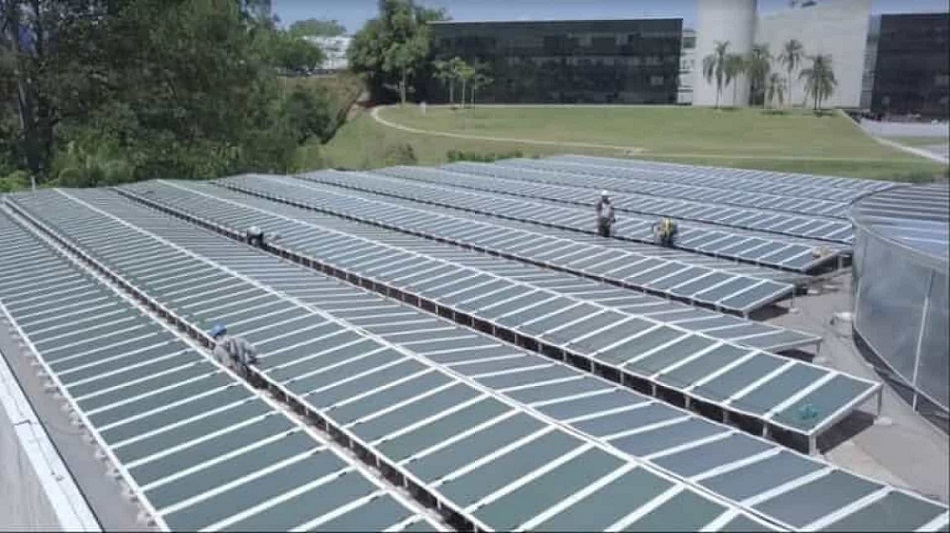RIO DE JANEIRO, BRAZIL – Cosmetics giant Natura has concluded the installation of the largest set of organic solar panels in the world on the rooftop of one of the buildings of its headquarters in Cajamar, in the metropolitan region of São Paulo, where 1,580 panels were placed in an area of approximately 1,800 square meters, capable of generating 201 kWh per day.

The panels have undergone three months of testing and, to date, power generation has seen some surplus. However, consumption peaks lead to full utilization.
According to Josie Peressinoto Romero, vice president of operations and logistics of Natura, the prospect of injecting surplus energy into the network and, thus, earn credits with the distributor, has not yet been studied. “We are assessing if we can commit to a regular daily surplus because when there is an event, we do not have surplus energy,” said Josie.
The energy generated serves the 21 rooms and two auditoriums of the Natura Learning Center (NAN), in which the set was installed. The majority of employee coaching and celebrations with collaborators and consultants take place in the building.
Should solar power be placed in the plant, however, the technology would not be able to fully meet the demand and would need to be complemented by other energy sources.
“It is more advantageous to use conventional solar panels in the factory”, said Rogério Duarte, counselor of the Brazilian Association of Distributed Generation (ABGD). In Cajamar, the whole Natura complex uses wind, hydroelectric and, now, solar energy.
The organic photovoltaic films, called OPV, used on the Natura building are only 1,5 millimeters and are made of semiconductor polymers, with a combination of five layers of inks printed on a recyclable PET plastic film. They are better than traditional panels, made of silicon, in weight and versatility, but they lose in price and efficiency.
“We expect to learn from this technology, to understand it in relation to others, to take the next step,” said Josie, “An alternative is to have this type of installation in all our distribution centers”.
The technology was introduced to the company by Sunew, a four-year-old startup from Minas Gerais that has already served Natura, Petrobras, Energisa, and Itaú. As it is a flexible and lightweight material, the OPV allows applications on different surfaces, including vertical ones, as in the case of Petrobras: the films have been applied to the glass front of the oil company’s office in Santos.
Heat
At Itaú, another function other than power generation made the bank adopt the OPV: thermal comfort. The glass skylight in the bank’s gym area at the Walther Moreira Salles Tower in Jabaquara, in the southern zone of São Paulo, overheated the internal environment.
The OPV blocks 90 percent of UV rays and 75 percent of infrared rays and was applied on site along with a thermal film.
According to Duarte, the use of alternative energy by all kinds of companies in Brazil is a path with no return. “Our country has everything to reach an important potential inside the energetic system very quickly”, he said.

For Natura, the use of solar films is one step closer to the company’s future goal, of evolving from a company that neutralizes carbon to one that generates positive environmental and social impacts.
“We are working to return to the environment more then we take from it”, said Josie.

